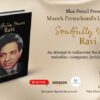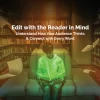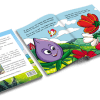
By Abhimanshu
Pictures do tell a story of their own! You may be familiar with the age-old adage, “A picture is worth a thousand words.” Regardless of language, one glance at an illustration can often reveal where a story is headed.
Illustrations were one of the earliest forms of human communication. Before the advent of language, our ancestors used pictures to convey ideas and stories. Engravings etched into stones told tales of their own, serving to preserve history and share stories with future generations.
It’s fascinating to note that these illustrations were, in fact, the first written language of ancient societies. Instead of relying on letters and words, people worldwide used symbols and pictures to communicate memories, beliefs, and stories.
The Union of Illustration and Words
The written word has always been considered the primary source of knowledge. However, over the years, writers began to understand the power of illustration. They strived to enhance their works by incorporating striking graphics to captivate readers. This union of words and imagery created a new dimension to storytelling, which continues to captivate audiences.
It’s no secret that adding graphics to text can do wonders in capturing a reader’s attention. Whether you’re a grown-up or a kid, visual aids help you to imagine and understand the story better. Today, a work of art properly balances illustration and words. And rightly so.
This is where the role of professional book illustration becomes invaluable, as it bridges imagination with reality for readers of all ages.
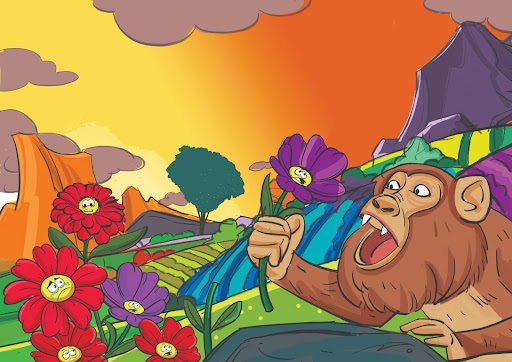
Illustrations are like magic spells for the little ones that bring the tale to life. Even before they know how to read, a colourful picture can take them on an adventure and help them understand the story’s events.
According to Jean Piaget’s Cognitive Constructivism theory, a child’s cognitive growth can be classified into four distinct stages: Sensorimotor, Preoperational, Concrete, and Formal Operational.
During the Preoperational phase (typically occurring between the ages of 2 to 7), children learn to comprehend the world by utilizing words and pictures. Children can better understand their culture and identity if we successfully introduce high-quality illustrations during this stage.
Illustrations in children’s books also serve another crucial purpose, i.e., capturing the child’s attention and motivating them to read. Incorporating comic and humorous images instils a love for books in the child, encouraging them to explore new worlds and indulge in their imagination.
High-quality children’s book illustrations not only entertain but also support early learning, helping kids connect words with images and concepts.
Who can resist falling in love with a book that features a charming and lovable character? Including illustrations of delightful characters can cultivate a sense of attachment and endearment towards the book and its characters.

Gorgeous and meaningful illustrations are important for all kinds of works.
For instance, take George Elliot’s realistic novel, “The Mill on the Floss“. An illustration depicting Tom and Maggie Tulliver walking together against a dingy backdrop, carrying a basket, sets the tone for the story. The way Tom looks at his sister Maggie in the image conveys that he would go to any extent to protect her. The picture also gives us a glimpse into the turbulent lives of a lower-middle-class family, helping us imagine the story more vividly.
Similarly, Lewis Carroll’s “Alice in Wonderland ” was a captivating fantasy fiction work with gorgeous illustrations accompanying a beautifully told tale. Pictures are essential in telling the story, setting the book’s tone, and making the words come to life in our imagination.
For poets and authors, poetry illustrations can enrich the reading experience, offering readers a visual representation of emotions and themes that words alone may not capture.
These are just a few examples of beautiful literature embellished by artistic imagery that often rejuvenates our imagination.

Create Your Visual Masterpiece
Embarking on the journey of illustrating a poem, novel, or children’s book may bring joy, but it is no simple feat. Yet fear not, for the impossible is merely a challenge waiting to be conquered. So here are some steps to help you get started.
Step 1: Determine the mood you want to create with your illustrations
Step 2: Choose the art or medium you wish to use
Step 3: Experiment with different colours, styles, and shapes to find what works best for your vision
Step 4: Create thumbnail sketches to work out your ideas before creating the final illustrations.
Step 5: Compile your pictures into a collection using clear plastic sleeves. Viola, your images are ready!
Things to Remember While Creating Your Masterpiece
Be bold and take creative liberties with your illustrations. Sometimes the best art comes from thinking outside the box!
Show your illustrations to friends and family to get their feedback. They may have ideas that you haven’t thought of, or they may notice something that needs improvement.
Have fun! Creating illustrations is a great way to express your creativity and bring your imagination to life.
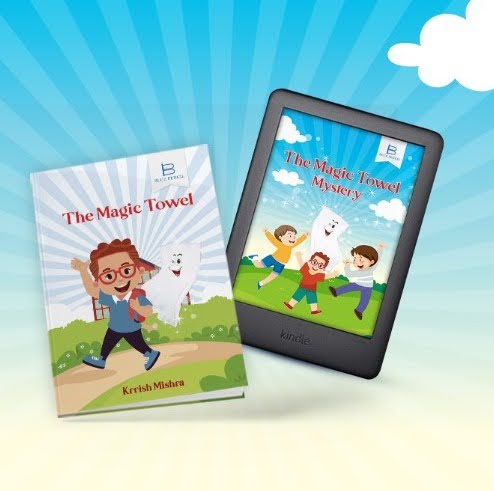
Remember, even if your illustrations don’t turn out exactly as you envisioned, they are still a unique and valuable expression of your artistry. So don’t be too hard on yourself, and enjoy the process! Your illustrated poetry book may become a best-seller and make you a household name.
Illustrations breathe life into words, transforming simple text into unforgettable storytelling experiences. From children’s books to fiction and poetry, they create a visual language that deepens connection and meaning.
At Blue Pencil, we offer professional illustration services for books, helping authors and poets craft stunning visuals that perfectly complement their words. Whether you’re creating a children’s adventure, a heartfelt poem, or a literary masterpiece, our illustrators can bring your vision to life.
Partner with us today and let’s create illustrations that make your book unforgettable.
More Must Reads on Blue Pencil
The Benefits of Working with a Professional Remote Editor
The Power of a Good Book Cover Design
The Canine Chronicles | Excerpt in Telekids
 Abhimanshu is a digital content writer with a passion for crafting engaging, informative, and impactful content. With years of experience under his belt, he specializes in creating content that resonates with audiences across various niches and industries.
Abhimanshu is a digital content writer with a passion for crafting engaging, informative, and impactful content. With years of experience under his belt, he specializes in creating content that resonates with audiences across various niches and industries.
With a passion for writing, Abhimanshu has earned qualifications in both NET and GATE, cementing his status as a skilled and knowledgeable writer. His literary talents are diverse, with a particular fondness for engaging travel articles, insightful book reviews, and literary criticism across various genres







